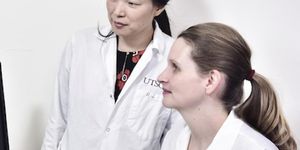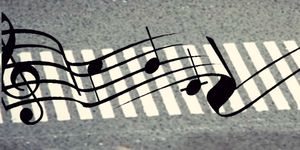Confronting the Lack of Science in Forensics
An editorial has been published in the Proceedings of the National Academy of Sciences which highlighted the dubious nature of forensic investigations. People may not realize it, but many of the methods commonly used in both popular entertainment and criminal courts have never been validated scientifically. The authors note that people may have been unjustly convicted as a result.
Six scientists penned the editorial, independent experts who were a part of the National Commission for Forensic Science (NCFS), a now-disbanded panel that was terminated last year by the Department of Justice (DOJ). The authors want to reinvigorate interest in reforming forensic techniques. The video above from John Oliver discusses the issue in detail.
"We wanted to alert people that this is a continuing and a major issue: that many of the forensic techniques used today to put people in jail have no scientific backing," said senior author Arturo Casadevall, MD, Bloomberg Distinguished Professor and the Alfred & Jill Sommer Professor and Chair of Molecular Microbiology and Immunology at Johns Hopkins Bloomberg School of Public Health.
Forensic science has been hamstrung by bias; it is closely associated with law enforcement and prosecutors, the authors note. "Almost all publicly funded [forensic] laboratories, whether federal, state, or local, are associated with law enforcement. At the very least, this creates a potential conflict-of-interest," they said.
If you’ve seen a crime show, you’re probably familiar with the typical methods; detectives and forensics technicians gather fingerprints, bite marks, fibers, and tire or shoe tread patterns. Those methods have not been subjected to rigorous scientific scrutiny but became admissible in court cases. Fingerprint analysis is one area that has been updated to be more quantitative, but other tools have not.
"The forensic experts might claim, for example, that the fibers isolated from a body 'match' the fibers in a rug that was in the back of the suspect's truck, but generally they won't be able to say what the error rate in their conclusion is" Casadevall explained. "In other words, they haven't properly characterized the uncertainties involved in concluding that it is a match."
When DNA came on the scene in the 1990s, it showed that previous investigative techniques weren’t adequate. Many convictions have been overturned since genetic technologies have become a more reliable piece of evidence.
Congress tasked the National Academy of Sciences (NAS) with assessing the issue; a report was issued by their panel in 2009 that was highly critical of forensic techniques. They urged the DOJ to establish an independent entity to modernize forensic science.
The DOJ did go through with creating the NCFS, although they would not allow it to be a fully independent entity. It was administered jointly by the DOJ and the National Institute of Standards and Technology (NIST). But, political motivations were upended in the last presidential election, and the DOJ abandoned the effort.
"It's a shame - we had been making a lot of progress," Casadevall said. "Commissioners were realizing that in addressing these questions they might be able to improve their methods and the justice system."
Casadevall doesn’t expect the current administration to reestablish the NCFS. But efforts will be made to keep attention on the problem in the hope that in time, the DOJ will change its position. "We're hoping to keep the issue alive," he said, "and we can see that a lot of otherwise educated and well-informed people still don't understand the extent of the problem."
Sources: AAAS/Eurekalert! Via Johns Hopkins University School of Public Health, PNAS










